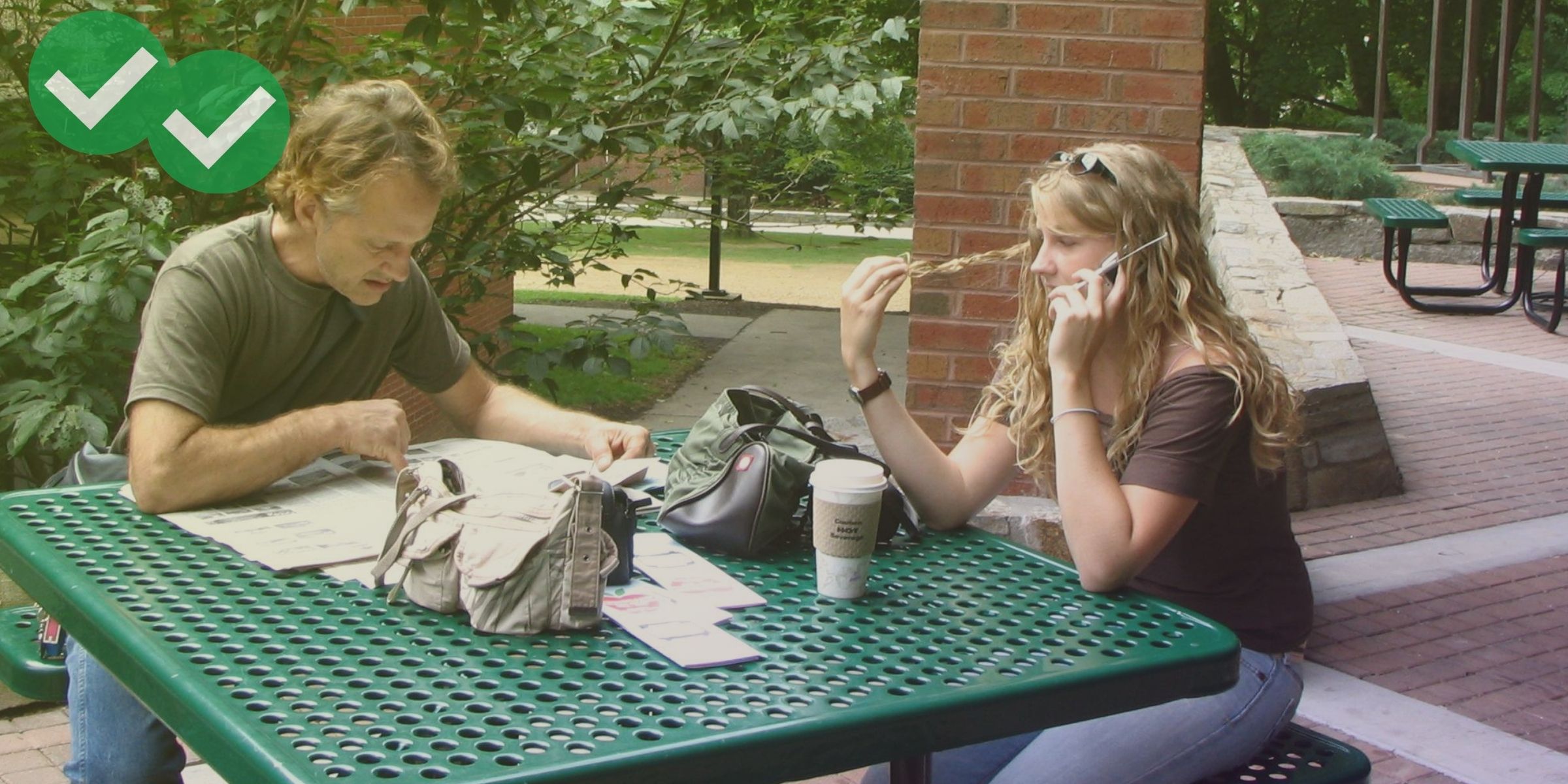In today’s guest post, Paul Austin from TOEFL Speaking Teacher shares his secrets to getting 26+ on the TOEFL Speaking section.
As many of you know, getting 26+ on TOEFL Speaking is no easy task. Some students struggle for months, if not years, to get the golden score of 26+. But some students get it on the first or second try. What separates the first group of students from the second group of students? Why do certain TOEFL students get 26+ immediately, while it takes others five or 10 or 15 tries to get 26+?
Today, I’m sharing four reasons why certain students get 26+ and how YOU can make sure to get 26+ next time you take the TOEFL exam.
Reason #1: Successful Students Understand All the Basics
Students who get 26+ on the TOEFL Speaking section understand all the ‘must-know’ basics about TOEFL Speaking. They understand how to organize and take notes. They know how to transition between the introduction, the examples, and the conclusion. They can organize their responses in order to answer the prompt exactly how the TOEFL evaluator wants. And they understand that it’s critically important to stay within one second of the response time limit.
Do you understand all of these points? Do you know how to organize and take notes? Do you understand what phrases to use for transition statements? If you don’t, then this might be preventing you from reaching a score of 26+.
Reason #2: Successful Students Create a Study Schedule
Students who get 26+ follow an organized study schedule that requires extensive amounts of speaking practice. And they give themselves plenty of time before a TOEFL test (or between tests) to improve their speaking score.
An example TOEFL Speaking study schedule might look like this:
Monday: 7 pm – 9 pm
Tuesday: 7 pm – 9 pm
Wednesday: 7 pm – 9 pm
Thursday: 7 pm – 9 pm
Friday: 7 pm – 9 pm
Saturday: 10 am – 11 am
Sunday: 8 am – 9 am
Repeat for 6 weeks before taking TOEFL Speaking.
If you are stuck at 23 or 24, you probably don’t speak enough English on a daily basis. In fact, for every point you want to improve, I recommend speaking for 15 hours out loud. So, if you got 23 and you want to get 26, you must speak out loud for at least 45 hours.
Of course, ONLY speaking doesn’t help, because even if you speak a lot of English but continue to make the same errors, you won’t get any better. So when you do speak English, focus on improving one aspect of your speech. I’ll go over this in more detail in point number four.
Can’t think of ways to speak more English? Here are some ideas:
– Talk to yourself! Yes, it’s weird, but if you talk to yourself in English while you’re making breakfast, while you’re in the car or while you’re watching TV, this will help you make progress by taking advantage of unexpected practice time.
– Find an English-speaking meet-up group: If you live in a somewhat big city in a foreign country, there are bound to be groups who meet and speak English. Find a group and join!
– Language exchange online: There are dozens of websites that offer students the opportunity to exchange languages via the Internet. In fact, I’ve created a TOEFL Speaking Partner Group on Facebook, where you can find a practice partner who is also preparing for TOEFL.
Reason #3: Successful Students Find and Imitate High-Quality Speaking Responses
There’s a saying that goes, “Practice makes perfect.” But let’s change this expression just for TOEFL Speaking: “Practice perfect makes perfect.” If you want to get a high TOEFL Speaking score, then you must imitate responses from people who have earned above 26 on the TOEFL Speaking section. When you start to imitate people who have scored 26+ (our definition of ‘perfect’ on TOEFL Speaking), you will eventually begin to sound more and more like these responses. The best way to measure your progress is to record your responses and then listen and analyze them. These are just a few of the questions you can ask yourself:
Did you use similar transition statements?
Did you use similar vocabulary terms?
Were you able to cover just as much material as the original speaker?
You might be wondering, “Well Paul, how do I find these perfect TOEFL Speaking responses?” Great question! Right now I’m giving away a free resource just for Magoosh TOEFL students — it’s a collection of TOEFL Speaking responses that earned scores of 26+ on the TOEFL Speaking test.
Reason #4: Successful Students Focus on 1-2 Problems at a Time
If you have yet to get 26+ on TOEFL Speaking, it’s because you’re making certain mistakes.
“Duh Paul. I already know that.”
Well, stick with me for a second.
Students who earned 26+ on TOEFL Speaking:
Have been speaking and learning English for many, many years, and it comes very naturally to them …
OR
Understood their English level wasn’t high enough to earn 26, so they took certain steps to improve their speaking ability.
Let’s analyze the second reason.
As I said above, the first step students take to improve their English speaking ability is to speak a lot. But as I mentioned, speaking a lot isn’t enough. These students also pinpointed the exact problems preventing them from reaching a higher level of English and worked to fix these problems. And they worked on fixing these problems by focusing on one or two issues at a time.
Some common issues include:
Pronunciation
Intonation
Grammar
Note-taking
Fluency
So, let’s take these 5 skills and apply them to the TOEFL Speaking schedule from above:
Monday: 7 pm – 9 pm – Focus on /i/ pronunciation for 30 minutes and focus on improving subject/verb agreement for 1.5 hours.
Tuesday: 7 pm – 9 pm – Focus on /i/ pronunciation for 30 minutes and focus on improving subject/verb agreement for 1.5 hours.
Wednesday: 7 pm – 9 pm – Focus on /i/ pronunciation for 30 minutes and focus on improving subject/verb agreement for 1.5 hours.
Thursday: 7 pm – 9 pm – Focus on /r/ pronunciation for 30 minutes and focus on improving intonation for transition statements for 1.5 hours.
Friday: 7 pm – 9 pm – Focus on /r/ pronunciation for 30 minutes and focus on improving intonation for lists for 1.5 hours.
Saturday: 10 am – 11 am – Focus on /r/ pronunciation for 30 minutes and focus on improving note-taking for all questions for 1.5 hours.
Sunday: 8 am – 9 am – Do 6 practice responses and measure progress from last week.
This is an example of how to focus on one or two issues at a time.
And there you have it: Four reasons why students earn 26+ on TOEFL Speaking.
Magoosh readers: What will you do to improve your TOEFL Speaking score? Tell us in the comments below!
Author Bio: Paul Austin is the instructor at TOEFL Speaking Teacher. His focus is on helping students attain a high TOEFL Speaking score through his revolutionary “80/20 TOEFL Speaking Mastery” method. For more information, and tons of free articles and videos, be sure to check out his website and Facebook page.





